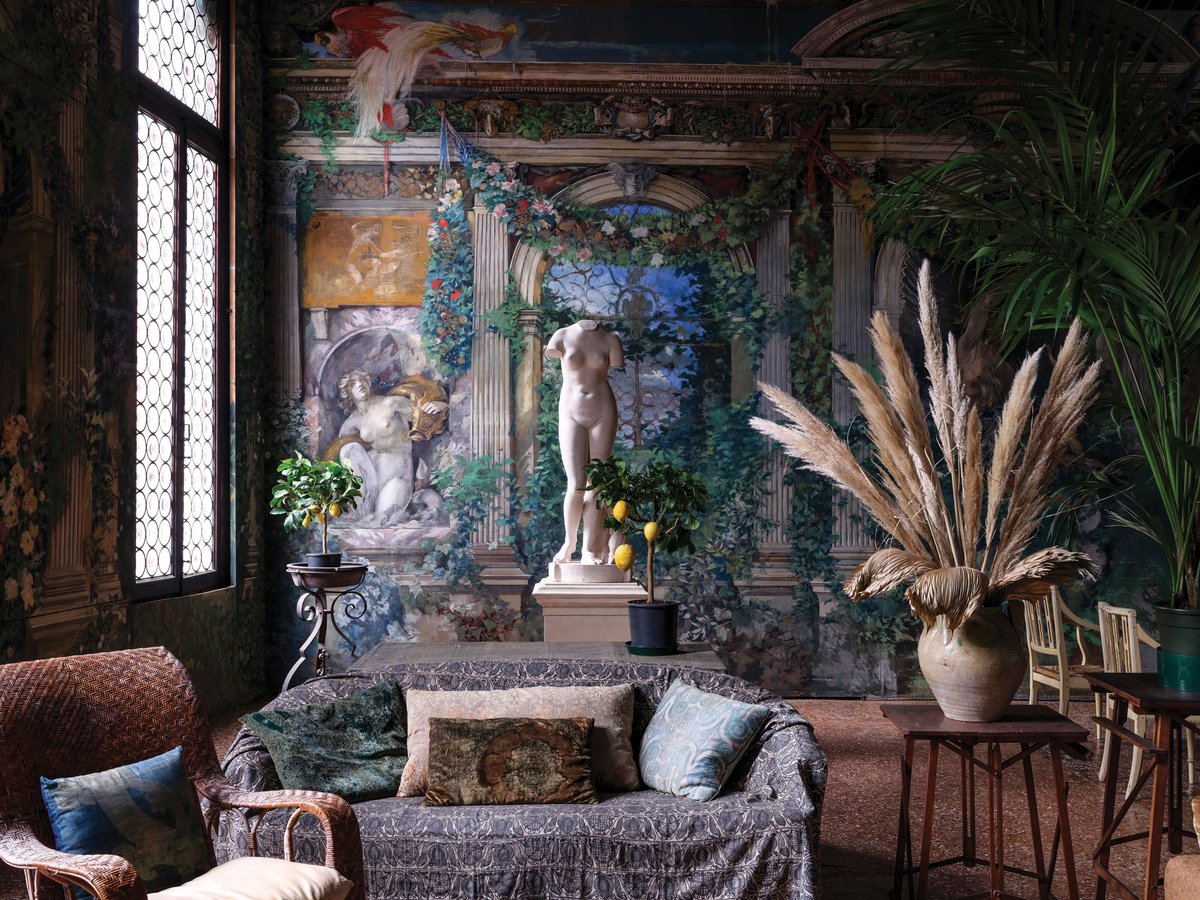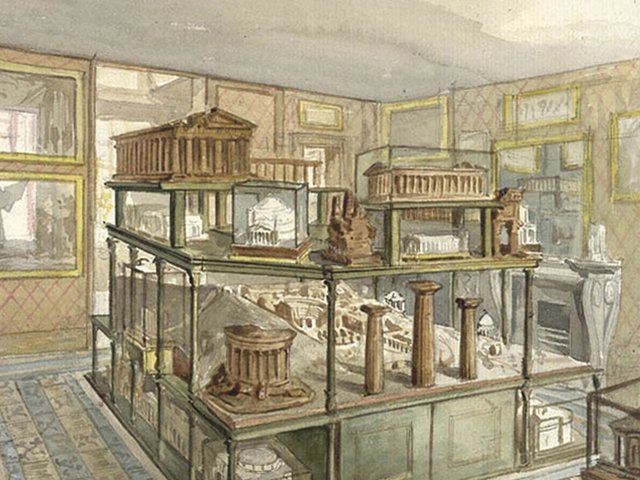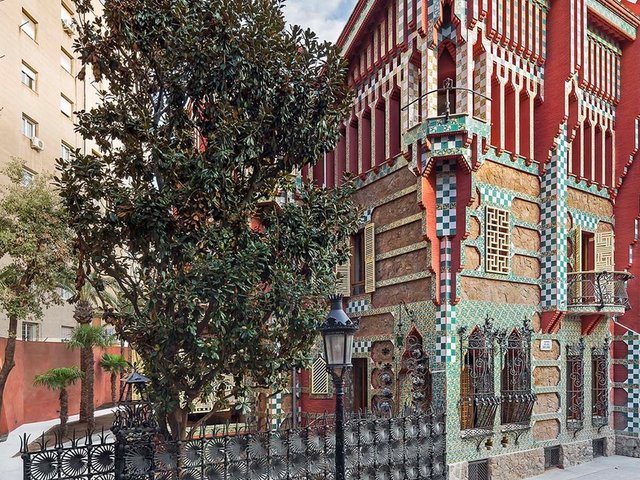In the Venice floods of November 2019, water rippled across the entrance hall of the Gothic palazzo that the Spanish artist and designer Mariano Fortuny y Madrazo once called his home and workshop. Bequeathed to the city in 1956, the eclectic house-museum has now reopened more than two years after sustaining serious damage in the exceptional high tide.
Paradoxically, the pandemic lockdowns of 2020 provided an opportunity to restore the entire ground floor of the Palazzo Pesaro degli Orfei. The walls were cleaned and structurally secured and the wooden floor relaid, funded by the Pam Panorama supermarket chain. The Museo Fortuny has also been transformed from a temporary exhibition space into a permanent venue dedicated to the designer’s life and work, which will be open to visitors year-round.
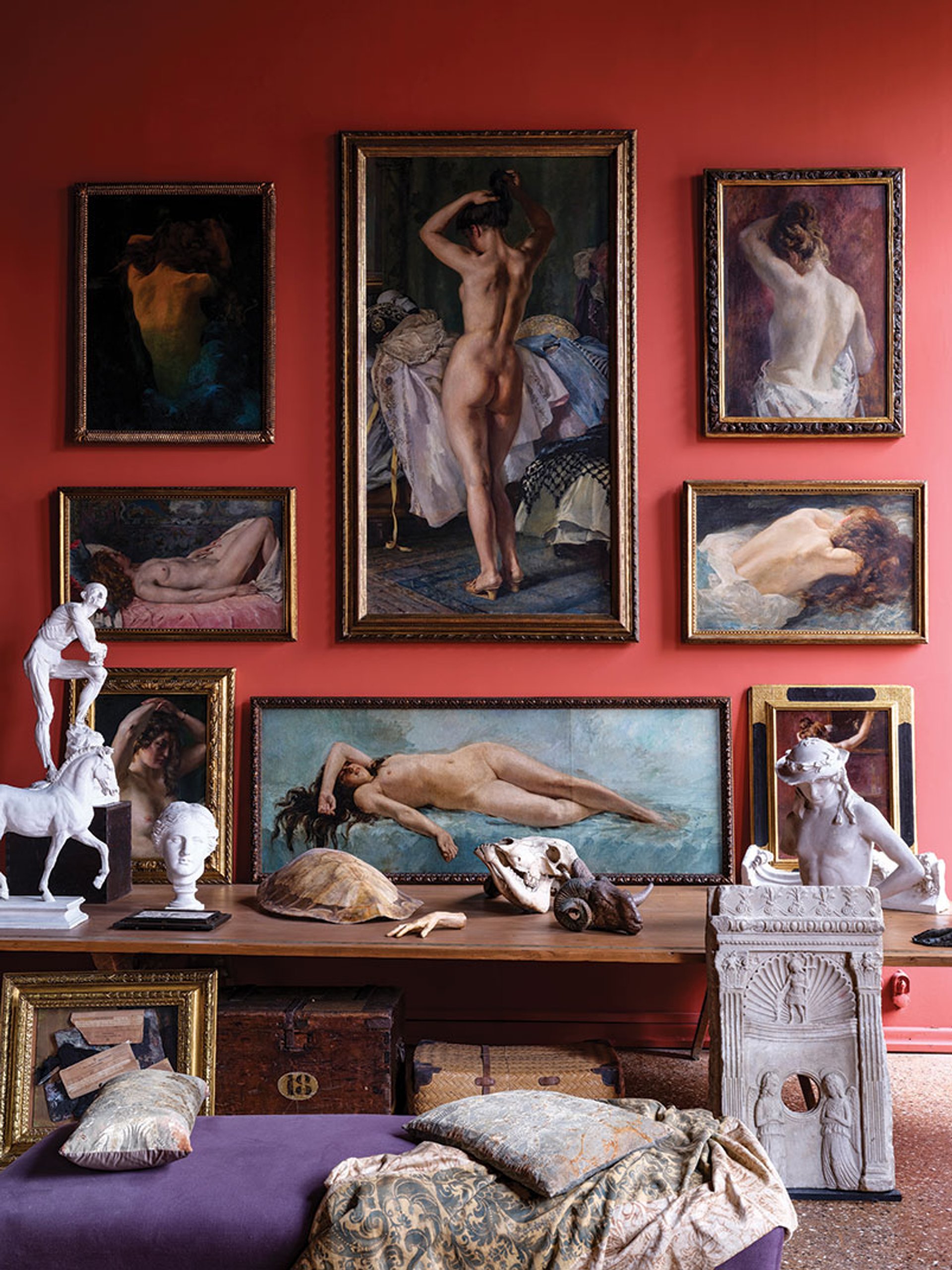
Mariano Fortuny's painting atelier on the first floor of the palazzo Photo: Massimo Listri
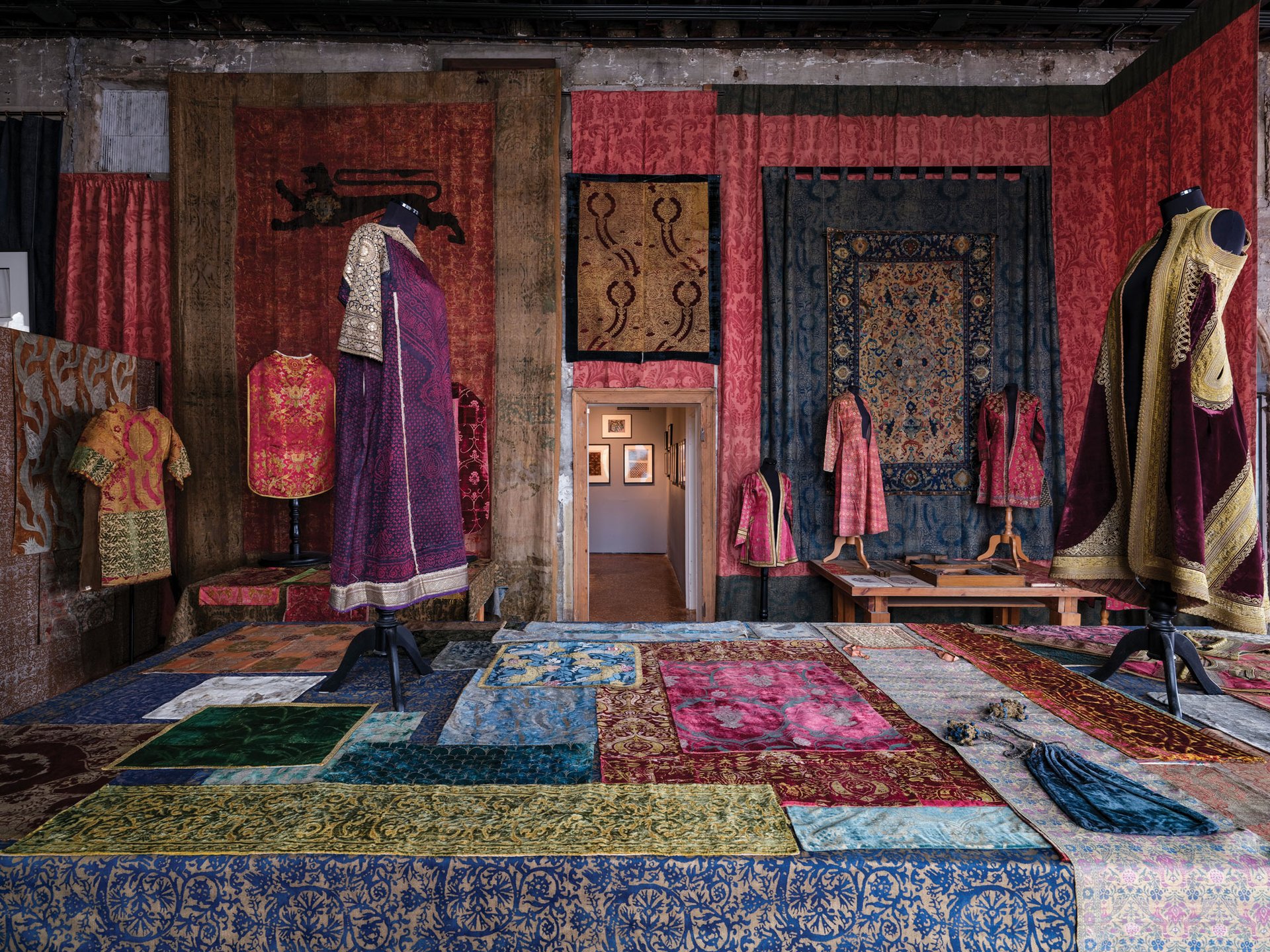
Fortuny was the founder of the eponymous printed fabrics company based in Venice Photo: Massimo Listri
Gabriella Belli, the director of Venice’s civic museums, recalls the milestone moment when the team removed dark window panels that had been installed during a 1980s restoration and remained in place for decades. Pulling away these covers and heavy curtains shone light—literally and figuratively—on the neglected collection. “We were archaeologists,” she says. “For every door, cupboard, wardrobe we opened, we’d stumble upon hundreds of objects that just needed to be reorganised.” Together with the opera director and set designer Pier Luigi Pizzi, Belli and Chiara Squarcina of the civic museums led a rehang that brings new life to these objects, 70% of which have never been exhibited before.
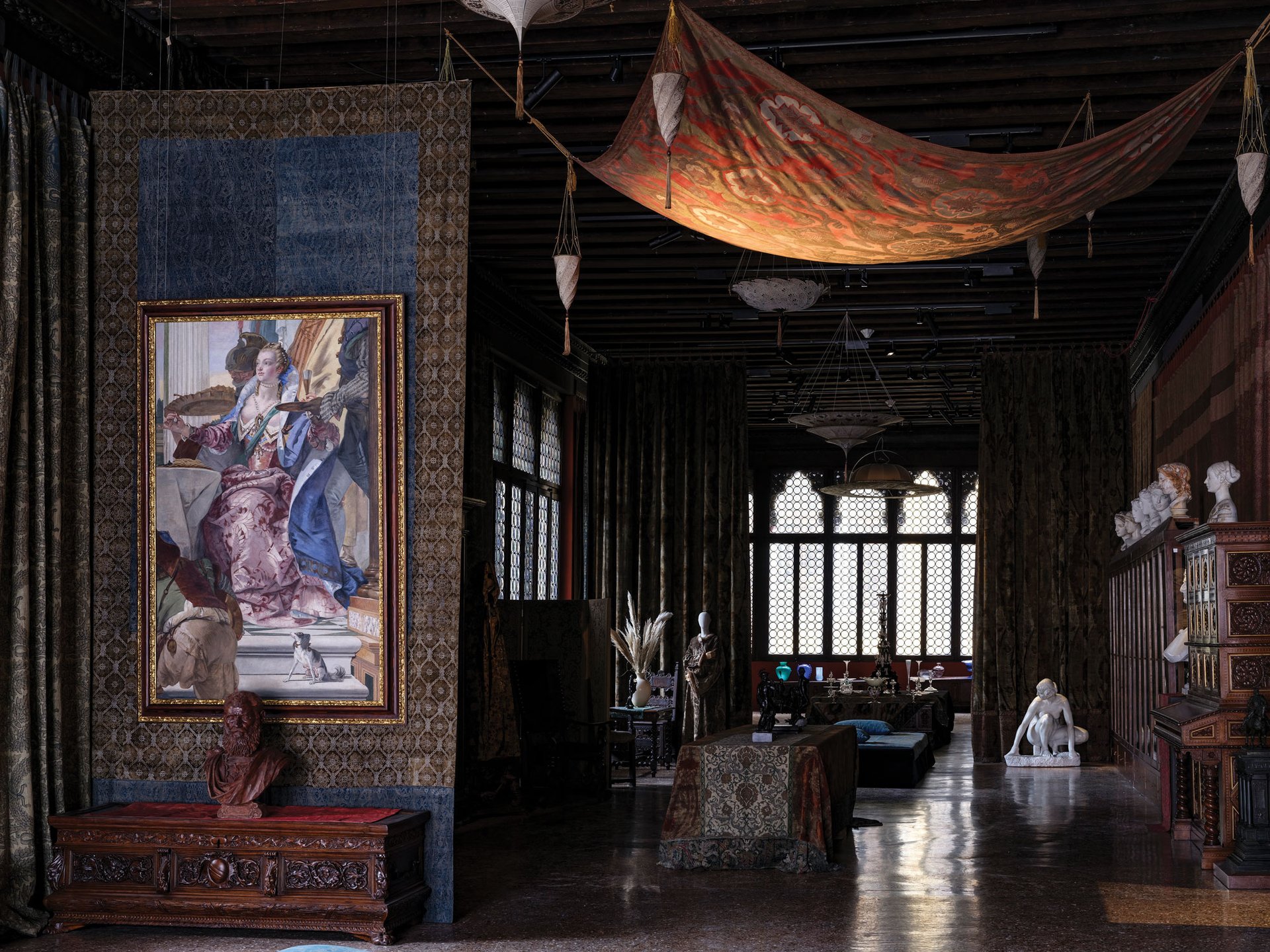
The civic museums of Venice enlisted the opera director and set designer Pier Luigi Pizzi to create a rehang bringing new life to Fortuny's neglected collection, 70% of which had never been shown before Photo: Massimo Listri
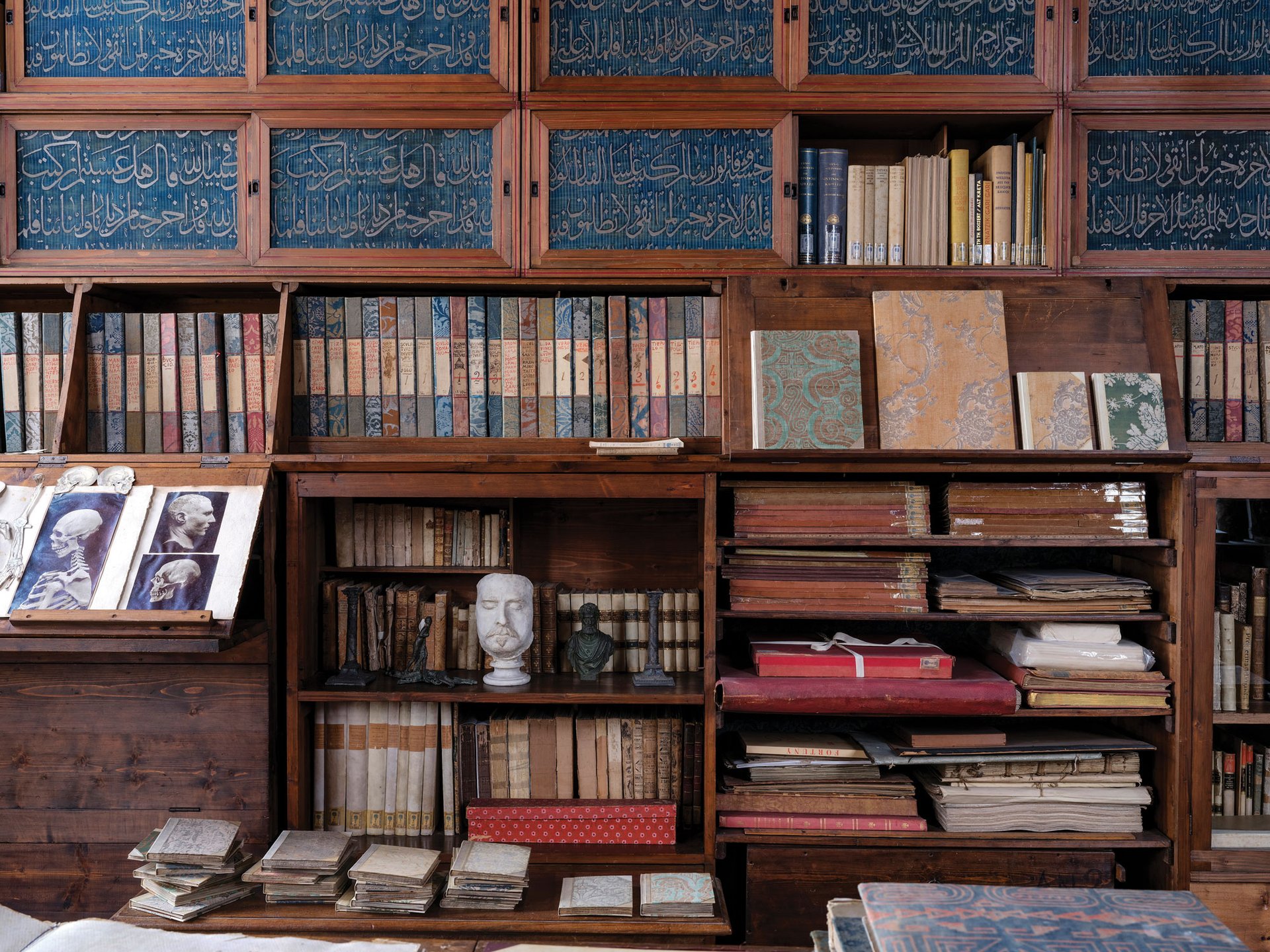
Fortuny's library on the second floor of the Palazzo Pesaro degli Orfei Photo: Massimo Listri
Today almost all of Fortuny’s original collection has returned home. It took the team a year to plan the layout, using archival images and paintings to reconstruct an interior that reflects the designer’s maximalist spirit. Antique textiles hang from the ceiling, long sofas are covered in cushions made from Fortuny printed fabrics and his mural The Winter Garden (1915-40s)—which was obscured by furniture for years—is resplendently uncovered. The second-floor studio space explores Fortuny’s innovations in photography, printing and set design. Books lie open on the desk in his library: photo albums, pressed leaves and anatomical sketches all lovingly labelled by hand.
The Museo Fortuny also has a new temporary exhibition space on the ground floor, inaugurated with 14 contemporary works donated to Venice’s civic museums from the Panza di Biumo collection in 2015. “We didn’t want to put Fortuny in the shade,” Belli says, “but we took the opportunity to showcase this small treasure”. In any case, it is hard to imagine Fortuny’s work ever being outshone again in this exquisitely restored house-museum.


